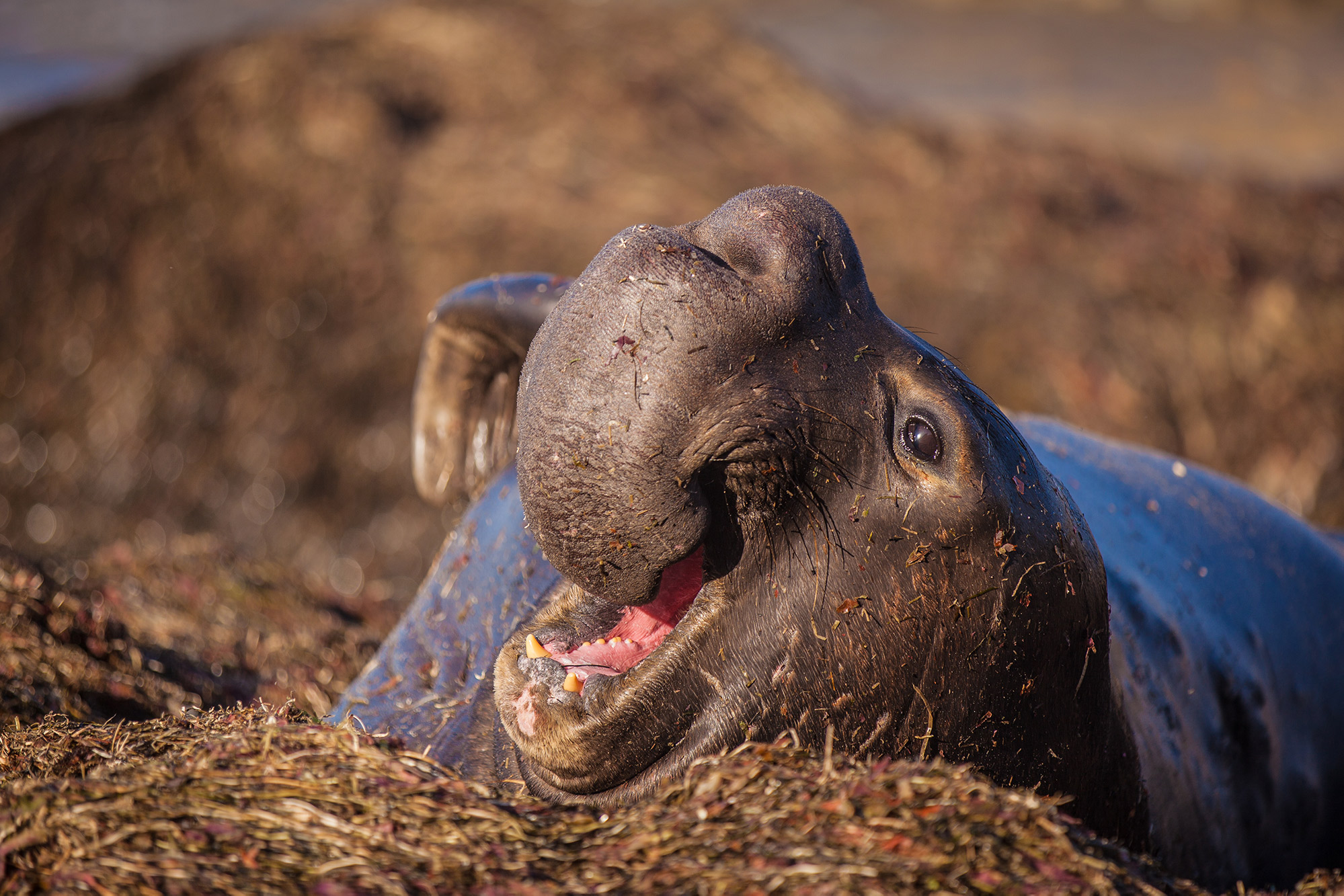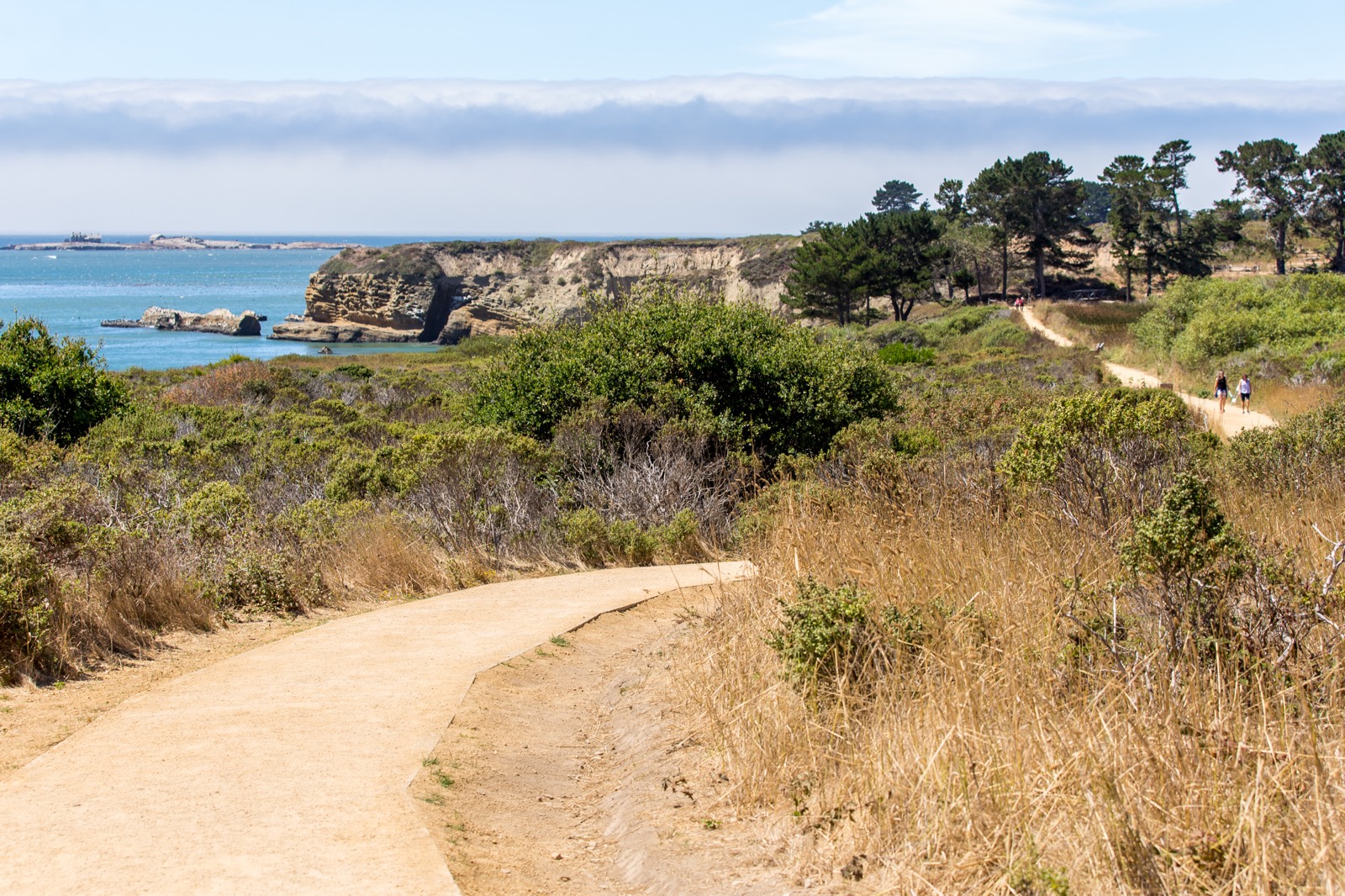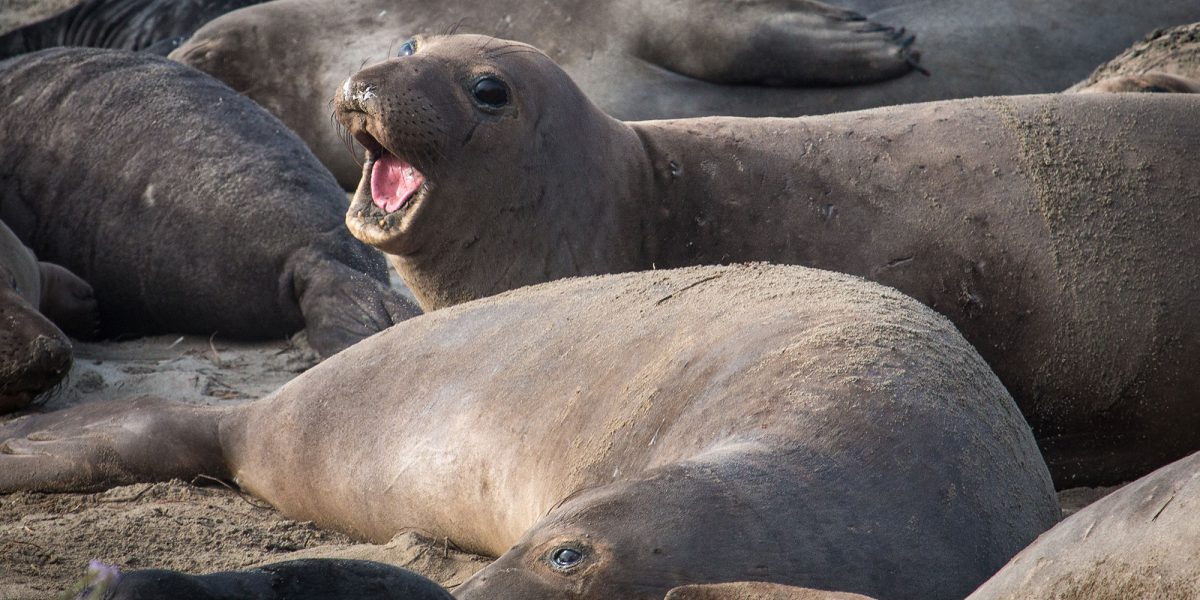The elephant seals aren’t the only things worth flapping your flippers for. With thousands of feisty northern elephant seals swarming its shores each year, Año Nuevo offers one of the most thrilling wildlife experiences in the state.
Located twenty-five miles south of Half Moon Bay, the park’s remote sandy shores play host to the mating, birthing, and molting seasons of the two-ton creatures that were nearly driven extinct in the 19th century. While the seals are clearly the stars, the park itself inspires with over 4,000 acres of diverse, mesmerizing landscapes—from a freshwater marsh to towering sand dunes—and a rich cultural history that includes historic structures from a bygone dairy farm.
A BRIEF HISTORY OF AÑO NUEVO
Like many areas of California, Año Nuevo was home to native people—a group of Ohlone indians known as the Quiroste—prior to being named by a Spanish explorer. On January 3, 1603, Don Sebastian Vizcaino sailed past the point, and the crew’s chaplain declared it Punta del Año Nuevo, or New Year’s Point, in honor of the date. By the mid 1880s, the founding of nearby Mission Santa Cruz and the Gold Rush brought throngs of settlers—and changes—to the California coast. In 1861, the land currently encompassed by Año Nuevo State Park became a coastal dairy farm founded by the Steele brothers who had emigrated from Ohio and developed numerous dairies throughout California.
During the 1880s, northern elephant seals, like whales, were hunted extensively for the oil that could be rendered from their blubber. By the close of the 19th century, it’s estimated that fewer than 200 seals remained on the planet. Facing certain extinction, the seals were granted protection by the Mexican and United States governments in the early 20th century. Elephant seals began appearing at Año Nuevo in 1955, long after the dairy ceased operating and the area had returned to a quiet and remote setting. Since then, the seals have held on to this habitat, and their population has rebounded tremendously.

ELEPHANT SEAL LIFE
While Coastside visitors are likely familiar with harbor seals, the sleek swimmers whose whiskered faces are frequently seen bobbing just offshore, elephant seals have a unique set of attributes including an enormous size, cartoonish snout-like nose, and a seasonal schedule that works like clockwork.
Elephant seals spend most of their lives at sea, usually foraging for food—the males along the continental shelf near Canada and Alaska, the females in the deep Pacific ocean. With an appetite for squid and hagfish, they are expert deep-sea divers—only sperm whales beat them as the deepest diving marine mammals. The seals only come ashore during molting, mating, and birthing season. In spring and summer, elephant seals haul out at Año Nuevo to molt, a three-to-four week process that sheds their fur and whiskers. After heading back out to sea, the males will start to return in late November in anticipation of mating season. The three-to-five-thousand-pound bulls battle it out to establish a pecking order as the victors will do much of the breeding. The females—pregnant from the previous year—begin to show up in December, and the party gets started. Each female births one pup which will quadruple in size in one month thanks to an exceptionally fatty mother’s milk. The mating cycle begins anew before the females head back to sea leaving their pups behind to master swimming in shallow offshore waters so that they may soon head north to join the hunt for food.

VISITING THE SEALS
Each year, hundreds of thousands of visitors flock to Año Nuevo to view the seals. You’re nearly certain to see them any time of year, but winter offers the most dramatic viewing when thousands of seals haul out to clash, mate, and birth. Worried about inclement weather? It’s the best time to visit. The huge animals are most active in cold weather due to the thick layer of blubber that keeps them warm in chilly ocean waters but makes them sluggish on warm days.
High Season: Winter
From December 15 to March 31, visitors coming to view the seals are required to join a docent-led tour. The 3-mile excursion lasts 2.5 hours and can be reserved in advance beginning in October. Visitors with mobility issues are invited to reserve an Equal Access Tour which delivers guests to viewing areas via a short wooden walkway. To reserve a tour, call 800-444-4445. Note that from December 1st to 14th, all viewing areas are closed to allow undisturbed shore access for pregnant females.
Off Season: Spring – Fall
From April through November, the public is welcome to visit the park and walk out to the restricted viewing areas with a permit (a limited number of permits are issued free of charge on a first-come, first-served basis at the park). Docents are stationed year-round at viewing platforms to offer insight while mounted viewing scopes allow visitors to zoom in on the hulking creatures.
AN AWE-INSPIRING COASTAL LANDSCAPE
While elephant seals remain Año Nuevo’s biggest draw, visitors shouldn’t miss the park’s exceptionally scenic trails, beaches, and historic attractions. The roughly 2-mile Año Nuevo Point Trail—which stretches from the parking lot to the seal preserve’s northernmost viewing area—is a destination of its own as it traverses sheer coastal bluffs, seaside meadows, and a garden of colorful coastal scrub. An early morning stroll feels like a coastal safari given the number of wildlife you’re likely to spot including scurrying quail, swooping red-tailed hawks, and scat from the park’s many nocturnal animals such as foxes, bobcats, and coyotes. Perhaps the most thrilling wildlife moment is arriving at the massive sand dunes inside the seal preserve and, before catching sight of one, hearing the creature’s loud, rolling grunt that calls to mind a scene from “Jurassic Park.”

The Año Nuevo Point trail offers a few small detours with big payoffs. Toward the beginning of the path, a short spur trail leads down to Cove Beach, a stunning white-sand beach bounded by sea caves and sheer coastal bluffs. And be sure to check out the numerous scenic overlooks that dot the path offering sweeping views of the majestic coastline, forested hills of Big Basin State Park, and the protected waters of Año Nuevo Bay. You’ll also notice Año Nuevo Island sitting just offshore and topped with what appears to be a grand haunted mansion. The decaying house is a former lighthouse keeper’s residence, a remnant of the light station that was erected in the 1880s following numerous shipwrecks. The abandoned house is now a windowless island abode for California sea lions and nesting cormorants. As such, the home and the island are off-limits to the public.
The historic structures that you are welcome to visit are the 19th century dairy farm buildings located near the park’s entrance. Pop into the cozy 1880 horse barn to watch a short film on the elephant seals, and eye historic photos of the dairy and surrounding area during the 1800s. Next door, a stunning, cavernous dairy barn houses a park store and Marine Education Center which details the fascinating lives of the elephant seals.
The Coastside is home to a vibrant diversity of wildlife and nature preserves, from the teeming marine life at Fitzgerald Marine Reserve and Pillar Point to the lush redwood forests that envelop winding Highway 35. For more nature-filled adventures, check out the many destinations and activities listed in the Discover section.
